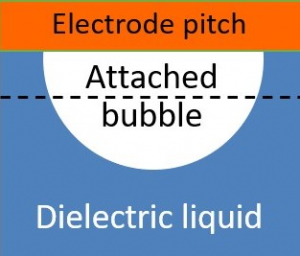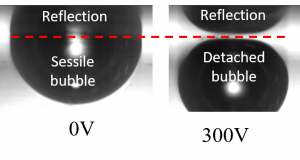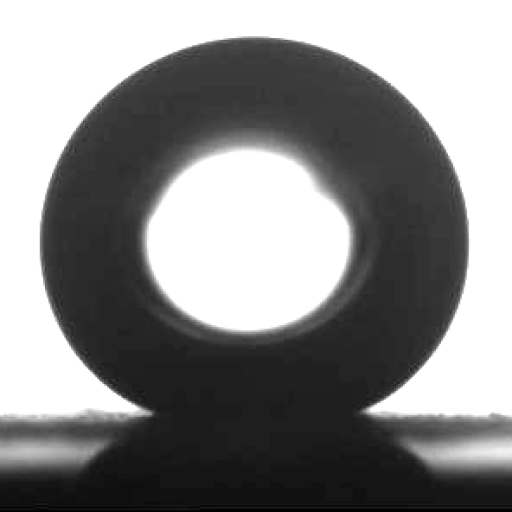Bubble Control
Bubbles attached to surfaces occur in both nature and industry. However, the presence of bubbles can be problematic. For example, they can damage the operation of microfluidic devices and interfere with heat transfer processes. Therefore much effort has gone into methods for removing bubbles from surfaces either mechanically or electrically. We can remove bubbles from surfaces using dielectrophoresis to repel them from regions of high electric field intensity.

We place a surface containing an embedded set of electrodes in a dielectric liquid (propylene glycol). A pipette is used to place an air bubble on the underside of the surface, as shown schematically in the image above. We then use liquid dielectrophoresis to detach the captive air bubble, as seen in the video below.
Note that in the video, we can also see a reflection of the bubble in the surface containing the electrodes, as illustrated below.

We can control the distance of the detached bubble below the surface using a voltage. At this “levitated” position, the liquid dielectrophoresis force exactly counterbalances the gravitational buoyancy force. The video below shows position control of three bubbles side-by-side.
Publication
Bubble Control, Levitation, and Manipulation Using Dielectrophoresis, C.V. Brown, A.M.J. Edwards, A. Roberts, M.I. newton, I.C. Sage, R. Ledesma-Aguilar and G. McHale, Advanced Materials Interfaces 8 (2021), 2001204
